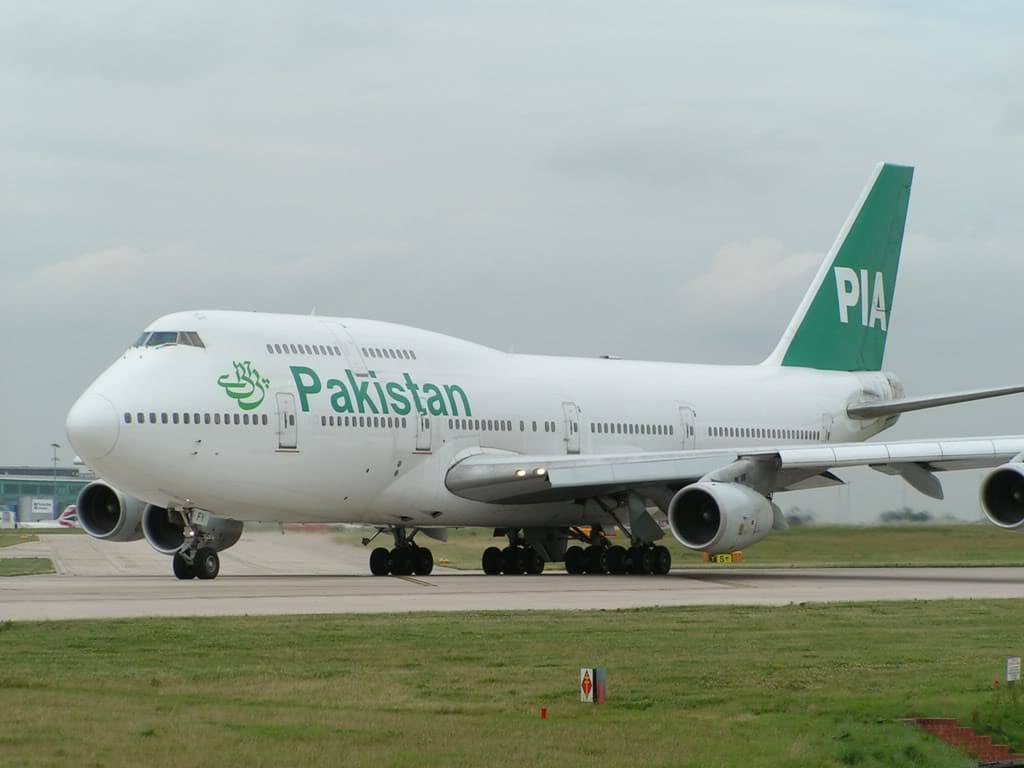Aerospace
Russia bans Pakistan’s flight to Toronto from using its airspace due to unpaid fees

According to Zee news report Due to unpaid debts, Russia banned a Pakistan International Airlines (PIA) flight with a destination of Toronto from using its airspace. According to 24 NewsHD TV, the “embarrassing” incident took place on June 17 when a PIA flight to Toronto was refused permission to cross Russian territory. The aircraft, which was sent back to Karachi, carried 250 passengers. Later, it was flown through Europe to reach in Canada the same day.
A PIA official downplayed the situation after pointing out the public embarrassment over Russia’s refusal to permit flight across its airspace despite economic collapse “Due to international sanctions, Russia is having trouble receiving overflight payments. The PIA is compelled to choose a different path.” After refuelling in Karachi, the jet travelled nonstop for 17 hours via Iran, Turkey, and Europe before landing in Toronto.
China’s TP500 freight drone makes its maiden flight.(Opens in a new browser tab)
As it makes its route from Islamabad to Toronto, the PIA flight will pass through Iran, Turkey, and Europe.” For the 17-hour nonstop journey, the aircraft will be refuelled in Karachi, he had noted. Investigative reporter Mubasher Lucman provided more specifics about the situation on Twitter, writing: “The PIA flight from Islamabad to Toronto is delayed because the Russian government wants PIA to pay off all outstanding debts.
Europe is a potential detour, but that presents its own challenges. To keep planes operating normally over the next two hours, PIA must take action. Social media users are currently inquiring about the origins of this “embarrassing predicament” with the Pakistani government.
Courtesy : Zee News

Aerospace
Boeing Transfers Rocket Stage to NASA, Paving Way for Human Moon Mission

Boeing has achieved a significant milestone by providing NASA with the second core stage of the Space Launch System (SLS) rocket.
This crucial component, crafted at NASA’s Michoud Assembly Facility (MAF), is set to propel the Artemis II crew into lunar orbit, marking humanity’s return to deep space after a 50-year hiatus.
The monumental Boeing-built rocket stage, the largest element of the Artemis II mission, will embark on a journey aboard the Pegasus barge, traveling 900 miles to NASA’s Kennedy Space Center.
Comparison of two legendary aircraft B777x vs B747 aircraft:Click here
Upon arrival, it will be meticulously integrated with other essential Artemis II components, including the upper stage, solid rocket boosters, and NASA’s Orion spacecraft within the iconic Vehicle Assembly Building. This intricate integration process is a vital step toward the eagerly anticipated Artemis II launch, slated for 2025.
“Boeing-built products helped land humankind on the moon in 1969, and we’re proud to continue that legacy through the Artemis generation,” remarked Dave Dutcher, vice president and program manager for Boeing’s SLS program. “Together, with NASA and our industry partners and suppliers, we are building the world’s most capable rocket and paving the way to deep space through America’s rocket factory in New Orleans.”
NASA, Lockheed Martin Reveal X-59 Quiet Supersonic Aircraft:Click here
The delivery of Core Stage 2 marks a significant achievement in the evolution of the SLS rocket. Towering over 200 feet and powered by four RS-25 engines, this core stage, coupled with two solid-fueled booster rockets, will generate a staggering 8.8 million pounds of thrust. This immense power is crucial to launching Artemis II and future missions into the vast expanse of space.
The SLS rocket stands unparalleled in its capability to transport both crew and substantial cargo to the moon and beyond in a single launch. Its extraordinary capacity will facilitate the delivery of human-rated spacecraft, habitats, and scientific missions to destinations including the moon and Mars, ushering in a new era of space exploration.
-

 Travel1 week ago
Travel1 week agoAir India to Expand US Operations with Three New Routes After a Decade
-

 Travel2 weeks ago
Travel2 weeks agoWhy We Should Avoid These Stamps in a Passport
-

 Airlines1 month ago
Airlines1 month agoInvestigations Reveal Fake Chinese Titanium in Boeing and Airbus Jets
-

 Tech4 weeks ago
Tech4 weeks agoChina’s CATL Plans 1,800-Mile Electric Plane Launch by 2027
-

 Airport3 days ago
Airport3 days agoTop 10 Largest Airports in the World by Size
-

 Aerospace4 weeks ago
Aerospace4 weeks agoChina’s Fighter Jets Turn Wings into Autonomous Drones
-

 Airlines4 days ago
Airlines4 days agoAir India Rolls Out A350s for Delhi-New York JFK and Newark Routes
-

 Defence3 weeks ago
Defence3 weeks agoBoeing Enhances Chinook with New Engines and Block II Upgrades at $96 Million







